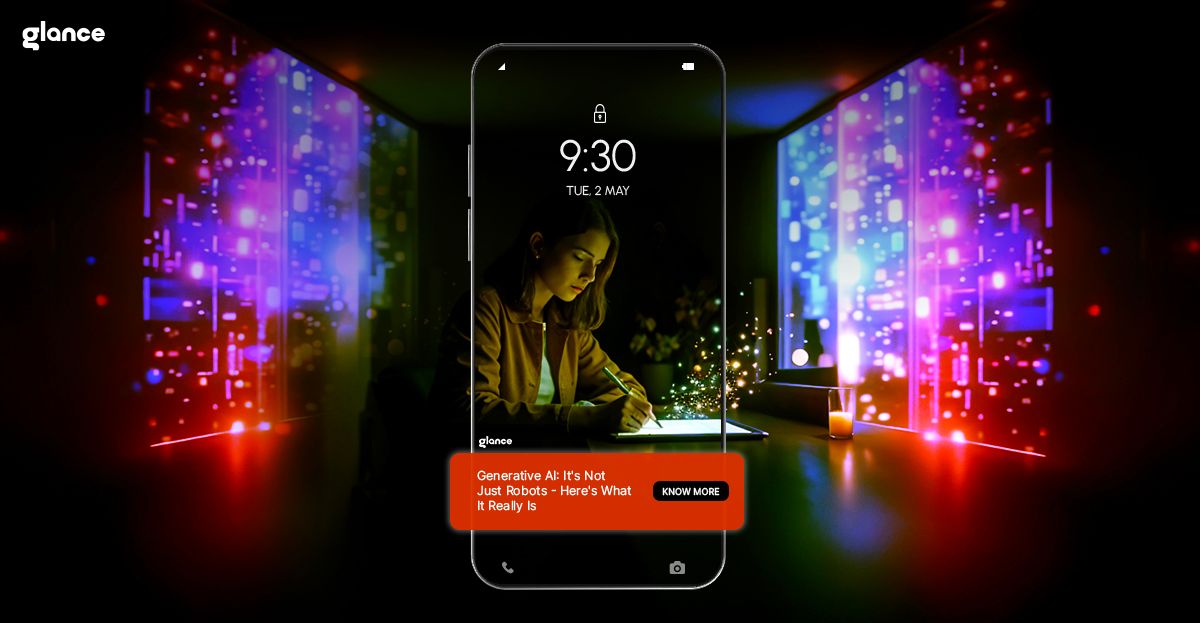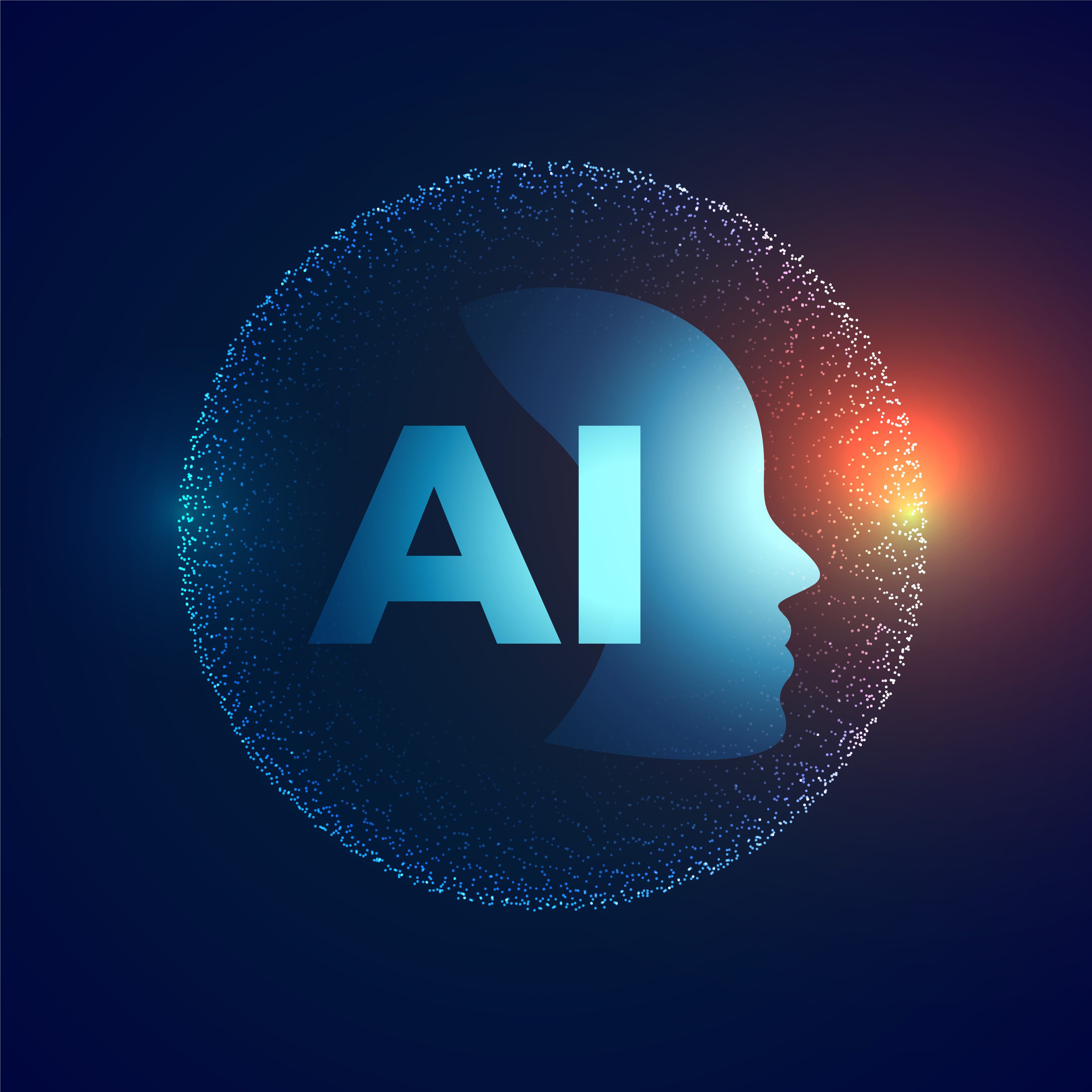5 Ways You’re Using Generative AI Daily Without Knowing It
Generative AI: It’s Not Just Robots – Here’s What It Really Is


When people think of AI, they often imagine humanoid robots with blinking lights and mechanical voices, reminiscent of science fiction movies like I, Robot, or Ex Machina. But Generative AI is much more than that. It powers creativity, personalization, and automation across various industries, extending beyond physical robots.
A common misconception is that AI equals robots. However, Generative AI is fundamentally about content creation—whether it’s text, images, music, videos, or even complex simulations—rather than just operating machines. Its impact is seen in creative fields, customer service, healthcare, and even scientific research, proving that AI’s influence is much broader than robotic automation alone.
What Is Generative AI & How Does It Work?
Generative AI refers to artificial intelligence that generates new content instead of merely analyzing or retrieving existing data. It learns patterns from vast datasets and produces outputs that mimic human creativity.
Key Technologies Behind Generative AI:
- Neural Networks – Deep learning models designed to recognize and generate patterns in data.
- Large Language Models (LLMs) – Such as GPT, which can generate human-like text based on training from extensive textual data.
- Generative Adversarial Networks (GANs) – Used for generating realistic images and videos, such as Deepfakes and AI-generated art.
- Diffusion Models – Advanced AI that creates high-quality visuals and animations, used in platforms like Midjourney and Stable Diffusion.
For instance, OpenAI’s DALL·E uses these technologies to generate highly detailed and creative artwork, showing how AI can be an artist’s assistant rather than just an analytical tool.
Who Is the Most Realistic AI Robot? (And Why It’s Not the Whole Story)
When discussing AI-powered robots, certain names stand out:
- Sophia (Hanson Robotics) – One of the most human-like robots, capable of realistic facial expressions and conversations.
- Ameca (Engineered Arts) – Known for its ultra-realistic facial animations and ability to engage in fluid dialogue.
- Tesla Bot (Tesla Inc.) – Designed for performing repetitive tasks in industrial settings.
While these humanoid robots showcase impressive AI-driven responses, the real innovation lies in the software that enables creativity, problem-solving, and decision-making. Generative AI is not limited to physical forms but is revolutionizing digital interactions—think ChatGPT, Google Bard, and Claude AI, which create text-based conversations, assist in coding and even compose poetry.
Who Owns Generative AI? The Players Shaping the Future
The field of Generative AI is dominated by key tech players and research institutions, each contributing to the AI revolution:
- OpenAI – Creators of ChatGPT and DALL·E, pioneers in conversational AI and image generation.
- Google DeepMind – Developers of Gemini AI, focusing on advanced multimodal AI capabilities.
- Anthropic – Makers of Claude AI, emphasizing ethical AI development.
- Meta AI – Working on large-scale AI models like LLaMA.
- Microsoft & Amazon – Invest billions in AI infrastructure and cloud-based AI services.
The battle between open-source AI (community-driven models like Meta’s LLaMA) and proprietary AI (corporate-controlled models like OpenAI’s GPT-4) is shaping the future of AI accessibility and innovation.
How Does Generative AI Improve Robotic Learning?

Generative AI plays a crucial role in training robots to learn and adapt in real-time. Traditional AI relies on predefined commands, whereas Generative AI helps robots develop intelligence through:
- Reinforcement Learning – Robots improve over time by learning from experience, similar to how AlphaGo defeated human world champions in Go.
- Simulated Environments – AI-powered robotics simulations allow testing in virtual settings before deployment in real-world scenarios (e.g., self-driving cars learning in digital traffic simulations).
- AI-powered Vision and Speech Models – Robots can recognize objects, read human emotions, and process natural language more effectively with AI advancements.
5 Real-World Applications of Generative AI in Robotics
1. Autonomous Vehicles & Drones
AI-generated simulations refine self-driving technology, as seen in Tesla’s Autopilot and Waymo’s self-driving taxis.
2. Healthcare & Surgery Assistants
Robotic surgeons like Da Vinci Surgical System assist doctors in performing minimally invasive procedures with precision.
3. Manufacturing & Logistics
AI-powered robots optimize factory automation, warehouse management, and logistics, enhancing efficiency and reducing human labor in repetitive tasks.
4. Creative AI for Design & Art
AI assists architects, designers, and artists in creating innovative concepts, such as NVIDIA’s AI-generated artwork and designs.
5. Personalized AI Assistants
Robotic AI, like Amazon’s Astro home assistant, enhances human-robot interactions for security, communication, and convenience.
Beyond Robotics: How Generative AI is Driving Creativity & Personalization
Generative AI is revolutionizing multiple creative industries:
- Marketing & Content – AI-generated blogs, social media posts, and advertising (e.g., Jasper AI, Copy.ai).
- Gaming & Virtual Worlds – AI builds immersive virtual environments and lifelike characters (e.g., OpenAI’s GPT-powered NPCs in video games).
- Music & Film – AI composes music, generates deepfake actors, and enhances movie scripts (e.g., AI-generated music by AIVA).
- Personalized Shopping Experiences – Platforms like Glance AI leverage generative AI for personalized online shopping, including virtual try-ons and tailored product recommendations.
This shift proves that Generative AI is more about creativity than just automation.
Benefits & Challenges of Integrating AI in Robotics
Benefits | Challenges |
Faster learning & adaptation | Ethical concerns (deepfakes, misinformation) |
Increased efficiency & automation | High computational & energy costs |
Enhanced personalization & user interaction | Dependence on large datasets |
Cost reduction in repetitive tasks | Potential job displacement |
Improved accuracy in healthcare & manufacturing | AI bias & fairness issues |
Enhanced human-robot collaboration | Security risks & AI misuse |
Emerging Trends in Generative AI
- AI-Powered Creativity – AI as a co-creator in writing, art, and design.
- AI in Education – Personalized learning models adapting to student needs.
- Multimodal AI – Models that understand and generate text, images, and audio simultaneously.
- AI & The Metaverse – AI-generated virtual worlds enhancing digital experiences.
Conclusion: The Future of Generative AI - More Than Just Robots
Generative AI is transforming industries by enabling creativity, personalization, and automation. While robots remain a fascinating aspect of AI, the true power of Generative AI lies in its ability to generate content, innovate processes, and enhance digital interactions.
So, how do you think Generative AI will impact your daily life in the next five years?




